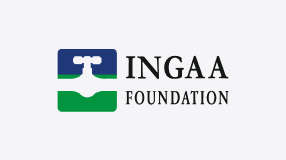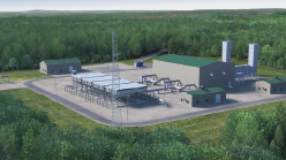Canadian natural gas supplies over 15% of United States needs through an interconnected pipeline system with 18 border points. The robust and relatively seamless North American market for natural gas that has developed around this pipeline network has been made possible by complementary energy and regulatory policies in both countries. The policies that characterize this enviable trade relationship have undergone much change in the 47 years since the Westcoast pipeline connected with Northwest Pipeline to commence the first significant natural gas exports from Canada to the United States.
To satisfy anticipated growth in demand for natural gas in both countries, particularly in power generation, investments in new and existing pipelines and storage infrastructure on the order of approximately US$61 billion in constant 2003 dollars will be required by the end of the next decade.1 While there is the possibility of additional conventional supply, the maturity of existing North American basins suggests that growing demand will be satisfied by unconventional supplies (coal bed methane and tight gas); offshore sources as liquefied natural gas (LNG); and frontier resources from Alaska and the Mackenzie region of the Canadian Northwest Territories. In addition, cross-border pipeline operations will in the future be affected by various economic forces, security concerns, and national and international energy issues.
In these circumstances, a continental approach to these challenges, which provides for the most seamless pipeline transportation possible, will prove to be in the public interest. Accordingly, measures that can achieve greater synergy in Canadian and U.S. regulatory policies, practices and processes should be encouraged.
In late 2003, the INGAA Foundation sought proposals to study opportunities for enhancing the harmonization of pipeline regulation between the two nations. In the context of this study, harmonization may be defined as "achieving compatible or uniform regulatory requirements, standards and processes across jurisdictions." Effective initiatives to harmonize pipeline regulation should enhance the clarity, predictability, practicality, flexibility and efficiency of regulatory requirements, standards and processes and the timeliness of decisions.
The first phase of this cross-border regulatory harmonization study has been devoted to assessing issues, assigning priorities and making recommendations for further work in four broad areas of inquiry: (1) certification, (2) construction, (3) design and operations, and (4) terms and conditions of service. It is contemplated that the second phase will involve an in-depth analyses of the issues and the development of detailed recommendations for the consideration of policy makers and regulators.





